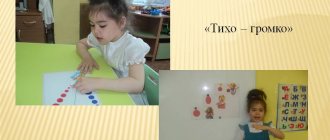When the child begins to coo, the young mother becomes indescribably delighted. Many new parents are really looking forward to this moment; they ask pediatricians and more experienced mothers and fathers about how many months does the child begin to speak his own language, draw out vowels, coo, and coo.
Below we will tell you at what months a child begins to pronounce the first vowels and consonants, and what this event depends on. You will also learn how you can encourage your baby to make feather sounds and what to do if time passes and he is still silent.
It is worth remembering that cooing and humming are different concepts that differ in the set of sounds. When cooing, vowel sounds predominate in speech, and when humming, which appears after 1.5 months, consonant sounds appear in combination with vowels.
Baby's first sounds
The first sounds or when the baby starts to coo? Note that for about the first five weeks you can only hear crying or grunting from the baby. And only by the second month of their life can babies begin to make their very first sounds. Usually the first sounds emitted are vowels that are not difficult to pronounce: a, u, o, e. At the moment of pronouncing these vowels, parents hear the long-awaited “aha”.
The baby begins to coo at 1-2 months, during this period they communicate with themselves, that is, they become familiar with new skills. Children watch the sound source for a very long time, and also try to reproduce it more and more often. Next, they try to apply their skills in communicating with family or toys. Quite often they begin to hum to a melody, which they really like. From the outside it seems that the baby is singing along.
Around the fourth month, babies begin to try to pronounce the first consonants. At first you can hear from them: m, p, b. And then, more and more often, you will hear individual syllables, from which the baby’s babbling gradually begins to form. By the end of the first year, children are already beginning to pronounce their first words, which consist of the same syllables.
First vowels
A newborn does not yet know how to do anything except grunt and cry to declare his inconvenience and discomfort. Crying is the beginning, that is, the very first way a little person communicates. In the first 4-5 weeks after birth, some babies squeak funny, but you won't hear much more from them.
There is a chance to catch the first vowels by the second month of life: he begins to draw sounds [a], [o], [e], [u] and combinations of sounds [a-a-a-a, ua-ua-ua-ua, ue -ue-ue-ue, wow-wow-wow-wow]. Because of the guttural pronunciation, it seems to us that the baby has learned to say agu or agi.
First, the child begins to hum for himself, he “tastes” his new skill, draws vowels this way and that, and it seems to the mother that the baby is singing. Once the baby has become comfortable with the novelty, he will begin to use humming to communicate with mom, dad, or toys. Some children “talk” for a long time with the pictures on the sides of the crib and with the hanging mobile, and when they see their own face they become even more active in the conversation. The baby, who has begun to gurgle, is delighted with his new ability.
Learning to coo
Gurgling is a fairly significant process in the further formation of speech. It is absolutely impossible to specifically teach a baby to walk. But some actions on the part of the parents will definitely help the child quickly begin to communicate with the world that surrounds him.
So, at what months does the baby start to coo, we have almost figured it out. Therefore, now we should highlight certain points that can speed up this process. What parents should do:
- First of all, parents need to communicate with their baby as much as possible. You need to accompany any of your actions with an explanation, that is, tell your baby what you are doing at this very moment. You need to communicate with your baby while changing a diaper, bathing, swaddling, etc. That is, communication should occur while the baby is awake. A conversation between an adult and a child should take place in calm tones, and speech should be affectionate. In no case should you use sharp bursts of hands or a raised tone in a conversation, in this case, you may frighten your child;
- Please note that you need to repeat after the child all his sounds, and also supplement them with new, but simple ones. Children begin to try to repeat what was said. The “ahu” dialogue should take place with the baby and parents, accompanied by a smile, then the baby begins to hum and smile;
- During a conversation, you need to massage the baby's hands with light and gentle movements. It is on the baby’s hands that there are points that are associated with areas of the brain that are responsible for the development of speech. Also, these manipulations can develop fine motor skills in the baby.
When communicating with a newborn, you should not distort words, as they will not hear the correct pronunciation, which in turn can harm the further development of speech. Try to read short poems, folk jokes, etc. to your baby as often as possible. Such actions will contribute to active development.
When should a child start talking?
First of all, it is important for parents to understand that the child does not owe anything to anyone. It develops in accordance with its internal rhythm, which can differ greatly from the average statistical norms. It happens that a baby who uttered his first words very early will subsequently have a very slow expansion of his vocabulary. And vice versa, a silent person who looked like a black sheep compared to his peers can suddenly overtake them all.
When assessing your child’s progress, we recommend that you do not take the stories of your friends to heart: many mothers and fathers greatly exaggerate the successes of their child. It’s better to focus on the following key points of speech development (not forgetting that each baby’s schedule is individual).
| 2–4 months | Gurgling At this time, the baby begins to “walk” and “gurg.” He is not yet trying to speak, he is simply aware of the fact that certain movements of the speech apparatus can turn into sounds. That’s why “agu” is completely international—it’s a “word” that comes naturally when you open and close your mouth. |
| 6 months | Gurgling At this time, the baby begins to “walk” and “gurg.” He is not yet trying to speak, he is simply aware of the fact that certain movements of the speech apparatus can turn into sounds. That’s why “agu” is completely international—it’s a “word” that comes naturally when you open and close your mouth. |
| ~ 1 year | First words By his first birthday, the baby learns his first real words. Yes, these are rather primitive “mom”, “dad”, “woman”, but they are no longer just a set of sounds. The child understands the meaning and addresses them to specific adults. Soon the toddler's speech is replenished with other simple words. For example, he more or less clearly screams “oops” when he drops a toy, or “give” when he wants to get something. A baby's primary vocabulary usually consists of 5–10 words. |
| 1-1.5 years | Vocabulary expansion Every week the child pleases his parents with new words, but mom and dad cannot always understand the child’s “dialect.” The fact is that the baby already distinguishes many words in the speech of adults, but he cannot repeat them. So “porridge” turns into “ka”, “fell” into “apa”, “bird” into “tika”. Often, a child comes up with conceptual words that combine several objects at once, for example, he uses one syllable to designate everything soft and warm - from a blanket to a dog. The baby's set of first words is limited to nouns, verbs, and interjections. When assessing a child’s development, it is important for parents to first assess not the number of words he speaks, but the passive vocabulary that he clearly understands in adult speech. |
| 1.5-2 years | First proposals This is the period when children begin to speak more and more actively. The baby learns two very important words for communication - “yes” and “no”. He repeats what he hears, and may even remember entire phrases. The vocabulary expands significantly and reaches 250 or more words. It continues to be dominated by the names of surrounding objects and basic actions, but the first abstract expressions appear, for example, “hello” and “bye.” The baby understands that words work better together and learns to form the first sentences. They are quite short - only 2-4 words, but they allow you to clearly express your desires. |
| 2-3 years | Full speech The baby’s speech becomes almost adult, because after nouns and verbs the first words related to other parts of speech appear in it. The baby begins to use pronouns, and at the same time understands that objects have gender and number. He discovers adjectives and now not only names objects, but gives them characteristics. He masters question words and begins to constantly ask you about one thing or another. He is even able to figure out tenses, declensions and conjugations in his head, even if he doesn’t yet know what they are called. By the age of three years, you can fully communicate with your child, and the scope of conversations is not limited to the topics of “eating, playing, sleeping.” The kid knows 800–1000 words, can tell you what he did while visiting his grandmother, answer your questions and ask you a hundred times more. By and large, the child’s speech skills have developed. All that remains is to polish them by continuing to build your vocabulary and practice your pronunciation. |
The baby is a month old and he is still silent
There is no need to worry if a newborn is not cooing by the end of the first month, because they are not mechanical devices in which the pace of development is set. That is, every baby develops as he needs. At how many months does a baby start to coo is a very individual question. One baby begins to try to pronounce “aha” already at three weeks, while the other is still silent, but he will begin to delight others with pleasant sounds a little later. Silence may be due to the fact that the child will be silent by nature.
There are also cases when the baby began to gurgle quite early, but then suddenly fell silent. You shouldn’t stress yourself out and worry, as the baby is simply beginning the period of preparation for the next portion of speech skills. After a certain period of time, the hooting will return, but accompanied by laughter, squeaking and squealing. It also happens that sudden silence can be caused by a number of certain factors, for example, due to stress or poor health.
If your child is silent for a long time, you should seek help from a pediatrician. You should start worrying after eight months. Perhaps the baby has developed some problems with neurology or with the hearing aid. The pediatrician should refer the child to a specialist, for example, a neurologist or otolaryngologist, to determine the causes of delayed speech development and their treatment.
How to teach a skill?
In order for your baby to start walking, it is important to perform simple exercises with him, thanks to which he will soon begin to make melodious, drawn-out sounds.
- Sing songs. Lullabies and calm children's songs will help the baby consolidate the experience of humming and begin to coo sooner. The combination of drawn-out vowels with admixtures of abrupt consonants is a strong stimulus for the development of the baby’s speech.
Reference! Today there are many drawling songs with the alphabet. Thanks to them, the child will learn to walk and already remember things necessary for a much later age.
- Get massages. Massaging the baby's palms and fingers, as well as the feet, will help him start talking sooner (you will also be interested to know when the baby starts talking). The nerve endings contained in the fingertips are directly related to the development of speech. You can start doing a light massage from the first days of the baby’s life, and at an older age (from 6 months), under the supervision of adults, you can let him play with cereals (beans, peas, millet, etc.), which is the best method for the development of small and gross motor skills.
- Read poems, fairy tales, nursery rhymes and other children's works. This will develop not only the baby’s speech, but also memory.
How is cooing different from humming?
When babies begin to coo and gurgle, parents experience a lot of joyful sensations. Gurgling is the sound of vowel sounds from a child's mouth, and humming is a speech form that is more complex.
Consonants begin to appear in sounds, for example: g, k, x in combination with vowels. Then you can hear: agu, ky, khy, gu. The walking stage can last up to four or five months. Sometimes these sounds arise spontaneously in a baby, for example, when studying a toy. However, gradually the baby will begin to use humming and cooing in response to communication or a smile from a loved one.
During the period when the baby begins to communicate, parents should understand that this is a rather important stage in the timely and correct development of the child. Three months are considered to be the peak of the boom. This is exactly the age when you should have a camera at hand so that you always have the opportunity to film the baby’s unique songs. Very often, newborns begin to hum along to certain songs, it turns out as if the baby is singing along.
The first stage is screaming
When a baby is born, coming from one environment to another, he needs to somehow declare himself, his presence in this world. While the child was in the mother's belly, all his needs were satisfied instantly. Now he sometimes feels some kind of discomfort - and screams (still at the level of an unconditioned reflex). When the baby's needs are met, the child develops a certain behavioral stereotype, and the cry becomes a signal of discomfort (wet, wants to eat or sleep, sad, lonely). The child has only one remedy - screaming. Gradually, with the help of a cry, the baby learns not only to attract attention to himself, but also to communicate. Remember, when your baby calls you, he first screams and then waits for an answer: will mommy come or not? Then he screams louder and waits again. In this way, the child gives his “interlocutor” the opportunity to engage in his first dialogue.
Photo: nastyaofly / freepik.com
Around the third month (and for many babies much earlier), the intonation of screams also changes. An attentive mother can identify many different cries of her child - it could be grumbling, whining, dissatisfaction, a sharp squeal of pain, angry “exclamations”.
“Even if I’m in another room, I can almost certainly tell from the screams what’s happening to my twins. When they quarrel and cannot share toys, the cry is the same; when they are bored, the cry is completely different. And, of course, I always distinguish shrill and sharp “dangerous screams” (when you urgently need to run to help) from “non-dangerous” ones, when children simply express their dissatisfaction.”
The cry is present in the child for quite a long time, developing in parallel with speech. And even when real, “adult” words appear, screaming continues to play a very important role in communication.
Speech development of a baby up to six months
We have already studied at what age the baby begins to gurgle, but now it is worth paying attention to what kind of help should be received from parents:
- Constantly communicate with your child. Try to convey to him everything that you do. Speech should be as calm, gentle and clear as possible. Under no circumstances should you raise your voice at your newborn.
- In your stories you should show your emotions, gestures and facial expressions. But do not make any sudden movements so as not to scare the baby. The child will begin to happily repeat the movements of lips, words and sounds after adults. Remember that kids watch all your movements.
- For educational activities, prepare cards with colorful pictures. Explain to the child what is depicted on them.
- Repeat the sounds your baby uses and add new ones.
- Play music and animal sounds for your child.
By six months, the baby will learn to consciously smile and coo; these skills are developed in the child through activities with parents. Give your baby as much attention as possible.
Delayed speech development: how to help your child speak
Delayed speech development is one of the most pressing problems in pediatric neurology today, which, unfortunately, also affects absolutely healthy children. Often the parents themselves are the cause of a child’s speech difficulties. The chief pediatric neurologist of the Ministry of Health of the Tver Region, Galina Anatolyevna Zueva, tells what to do and what should not be done under any circumstances so that the child speaks correctly and on time.
Hello, dear parents!
Today our conversation is devoted to a very important and pressing problem - the speech development of children. In the last few years, we have increasingly heard that a child who is not speaking at 2.5-3 years old is a variant of the norm, that there is nothing wrong with this, you just need to wait a little, and speech will appear. In fact, this approach is fundamentally wrong. There are physiological norms for proper speech and mental development, and it is very important to monitor their compliance from the very birth of the child. Only in this case will he be able to develop harmoniously and fully.
The main stages of child speech development
You can start developing your baby’s speech from the first day of his birth.
The first thing you need to pay attention to is how the baby cries. A baby’s cry from birth is very different, it becomes especially expressive in the first month of life, from it you can understand what the baby needs: he is cold, he is in pain, he wants to eat or go to the toilet, or maybe he just wants his mother to hold him in his arms. . If the child does everything correctly intonationally, then an attentive mother quickly learns to understand the difference and respond to these “requests.” In this case, mental and then speech development occurs harmoniously. If your child cries monotonously, at the same level, and does not respond well to the voice, consult a doctor.
If the child is healthy and has no hearing problems, then in response to positive emotions in the second month of life he begins to “walk.” Along with the “humming”, the first laughter appears - squealing in response to emotional communication with an adult. The sounds of “humming” are already distinguished by a certain variety with a predominance of combinations of guttural and vowel sounds (“gu”, “ge”, “ha”, etc.) With these sounds he tries to communicate, reacts to what is happening around him. If the baby does not start to “walk”, consult a doctor; perhaps he has a problem with his ears.
At two months, the period of onomatopoeia begins: the baby carefully follows his mother’s lips when she talks to him, and seems to be trying to repeat these movements, but so far silently. So, by 3.5-4 months, a true “humbling” is formed, where the child focuses on the pronounced sound, syllable, as if listening to himself. During the period of true “humming,” the sounds become longer, melodious, and more varied. Along with laryngeal and vowel sounds, labial sounds and combinations of vowels and labials are increasingly appearing.
By six months, the child develops babbling speech - he begins to pronounce some individual letters and syllables. During this period, it is important to monitor intonations - how he speaks, how he cries. At six months, a healthy child should already be chatting, pronouncing certain syllables, and repeating specific sounds after his mother. During the period of babbling, imitation of the sounds of an adult becomes more distinct.
By the end of the pre-speech period, the child’s nonverbal forms of communication with others become more complex. Communication is carried out using both hands, more differentiated facial expressions and sounds. The child reaches out his hands to his mother, utters separate sounds, as if asking “take me.” Then facial expressions become more complex. She becomes more expressive, symbolic gestures appear. The child can communicate using one hand. Babbling words of various intonations appear.
By the age of one year, a child should speak from 8 to 10 simple words: “mom”, “dad”, “baba”, “give”, “na”, that is, short simple words of several syllables. It is during this period that early speech development ends and motor speech begins to form as a way of communication between people.
After one and a half years, a child easily pronounces familiar and unfamiliar words by imitation, both addressed to him and accidentally heard from others. Intensive development of motor speech usually begins in the second half of the 2nd year of life. Until one year and six months, a child pronounces about 30 words with simple sound composition. At two years old, a child already speaks more than 200 words, he has almost phrasal speech, he should already be able to formulate a simple thought or request: “Mom, let’s go to the store, you promised to buy me a toy.” However, he may still pronounce some sounds unclearly. By the age of three, a child’s speech contains up to 1200-1500 words, including almost all parts of speech.
This development is considered normal. But this happens only when the parents constantly talk to the child, tell him fairy tales, and sing lullabies. A very big problem today is that live speech is increasingly being replaced by gadgets. Because of this, many children who were initially born healthy from a neurological point of view do not begin to speak in time.
If a healthy child at 2.5-3 years old does not speak phrasal speech at all and, at best, only speaks a few simple words, he has a delay in speech development, and this, unfortunately, must be treated.
Speech develops gradually
It takes time for a child to learn to speak correctly and construct logical, figurative phrases. When a child is just learning to walk, he takes his first hesitant steps with his mother’s help, and after six months to a year he is already running, jumping and dancing on his own. The same thing happens with speech: it develops gradually. The child not only remembers new words, but also at the same time trains articulatory muscles and learns to control intonation. This takes more than one year. Therefore, if at 3-3.5 years old your child is just beginning to pronounce the first words and construct the simplest phrases like “Mom, give me”, then by the age of six, when it’s time to go to school, he will not have developed full-fledged phrasal speech. It is important to develop speech gradually, but from a very early age.
Causes of delayed speech development
The first and most basic reason is brain damage due to ischemia, hemorrhage, and infection. But such deviations are immediately diagnosed, doctors monitor the child and take all necessary measures. These are the patients with whom a neurologist, psychologist and speech therapist are already working.
But there is a category of patients who are born absolutely healthy. But due to errors in learning, they also begin to experience delays in speech development. Most often, the reason is parents’ excessive fascination with mechanical sound, that is, sound from a TV, computer, tablet, phone. Children who watch a lot of cartoons or constantly play with singing-talking toys develop passive speech well, but their own active speech is not formed. This occurs due to the difference in wavelength between live speech and mechanical speech. In order for a child to start talking, you need to talk to him as much as possible, read fairy tales yourself, and sing lullabies.
Under no circumstances should a TV or radio be allowed to work in the background in the room where the baby spends time. Of course, if you want to show your child some cartoon or program on the computer, this can and should be done, but after watching the device you need to turn it off and put it away.
Of course, all these devices and toys allow mom to relax a little or do some of her own business. But when they replace live communication, this leads to serious problems with the child’s psyche. It’s better to prevent such things from happening than to have to spend years catching up. To restore the correct speech pattern in a three-year-old child, to change his perception, a lot of effort and time is required: the child cannot quickly catch up with such gaps, he has to resort to intensive drug treatment, and additional classes with speech therapists. This is a long and difficult path. Why bring it to this point if you can do everything right from the very beginning?
Why you need to sing lullabies
Singing lullabies is an important part of raising a child. The most famous lullabies, for example, “bayu-bayushki-bayu,” were invented back in the 5th-6th centuries, and it is no coincidence that we still sing them to children. They are built specifically in the timbre and wavelength fluctuations that are understandable to the child, calm him, and develop the brain. Each age has its own songs that need to be sung. Humming such lullabies to a small child and simultaneously rocking him in your arms creates the basis for proper mental development.
Nowadays, many couples approach pregnancy planning with full responsibility: they lead a healthy lifestyle, undergo all tests, read books about the health and raising of the unborn child. Include in this preparation and learning at least a few lullabies to sing to your baby. No matter how simple they may seem to you, they contain folk wisdom that has been proven over centuries for the correct development of personality, this is very important. Sing these lullabies for at least a year.
By the age of two, when the child already understands phrasal speech well, songs can be selected that are more plot-based, so that while the mother sings, he can imagine this picture in his head.
Talk to your child as much as possible
Don’t rush into conversations with your baby, calmly and measuredly tell him what’s happening around him, voice your actions. Then he will begin to perceive by ear the name of this or that object, and this is how passive speech is formed. From six months onwards, add details about the color and volume of objects: “small toy”, “red ball”. When you do this constantly, the child learns to hear and understand you.
This helps to explain to the baby after a year that panties should be dry, that is, it is quite early to potty train the child, and not use diapers all the time. At one and a half years old, the child is able to hold the bladder and control his pelvic functions. This is one of the important links in mental development. Of course, he will eventually learn to ask to go to the toilet himself, but these skills will come much later and not in the form in which he would like.
Therefore, it is very important to accustom yourself to talk to your baby as much as possible and limit mechanical sounds around him as much as possible - these are the most important parts of preventing speech development delays. If we build this correctly, then at the age of 2.5 years the child begins to speak in phrasal speech, and parents have no problems with his behavior or learning. If your child at 2.5 years old does not speak, especially if there is no so-called gibberish speech, he is silent and does not voice the game, a request addressed to you for something, then this is not a variant of the norm, this is a problem that needs to be dealt with.
How to talk to a child
- You need to talk to your child in a normal timbre; it is your tone and timbre that the child knows from his prenatal state.
- Try to speak in simple phrases, but do not lisp or distort words.
- If a child has a problem with vision or hearing, then the mother needs to start brightly painting her lips as early as possible so that he can watch her lips and understand exactly how she pronounces sounds.
- If a child had problems with swallowing in the first year of life, then, unfortunately, problems with sound pronunciation cannot be avoided. You can start working with a special speech therapist already in the first months of the baby’s life, even in the pre-speech period.
- Solve all problems as soon as they appear, do not put it off and do not wait for it to go away on its own. It won't work.
Is it a speech therapy garden or a regular one?
So, the child has grown up, and it’s time to decide which preschool institution to take him to. At this moment, it is important to figure out whether your baby has mental and speech problems, and what they are.
When the baby does not have any serious medical problems, start with a regular kindergarten. If in the first year your speech does not level out and develop to the required level, then you should apply for a medical-pedagogical commission. It runs from February to June. You can get a referral from a preschool or call them and make an appointment. To pass the medical-pedagogical commission, you must have a conclusion from a neurologist, speech therapist, or psychiatrist about the state of your child’s health.
If a child begins to speak in phrases, but does not pronounce certain sounds, then you can take him to a regular kindergarten that has speech therapy groups. There they work with children with normal psycho-speech development, but with incorrect settings for the sounds themselves. Typically, a speech therapist begins working with such children at the age of five in order to improve their speech and correct all weak sounds before school. On average, it takes three months to set and consolidate one sound.
One of the common disorders in children 3-3.5 years old is the so-called porridge in the mouth, when, due to a violation of the innervation of the speech muscles, the child cannot pronounce some sounds clearly and clearly. In this case, you cannot do without the help of a specialist; it is better to contact a neurologist to determine the exact cause of dysarthria and carry out the necessary treatment, if necessary; you also need to visit a special speech therapy garden. This requires an integrated approach: simultaneous coordinated work of a speech therapist, neurologist and psychologist.
The distribution of children into specialized groups or kindergartens is carried out by a medical-pedagogical commission.
And again, I repeat, it is much easier to prevent speech development delays, so that those children who could speak, but did not start due to lack of parental attention, do not end up in special groups. To do this, it is important not just to talk with the child, but to hear what he is talking about, try to understand him and respond to his words. I assure you, if you establish this contact from childhood, it will last a lifetime and will help your child become a good member of the family, society, reliable support and support for you.
How to prevent stuttering
There are times when a child does not begin to speak for a long time, but at the same time they work with him, he accumulates a large passive vocabulary, and can compose phrases in his head. If you start his speech process too actively, he will not be able to cope with the flow of speech and will begin to stutter. Most often this happens at 2.5-3 years. Children with tics (obsessive blinking, blinking, sniffing, etc.) are especially susceptible to stuttering. If you notice that the child begins to stammer at the beginning of speech, this is a signal that you need to contact a neurologist to solve the problem. Of all obsessive disorders, stuttering is the most difficult problem, which can take years to treat.
The pacifier and the child's speech development
Another important aspect of preventing speech delay is prolonged use of pacifiers and prolonged breastfeeding. I mean the situation when a pacifier or mother’s breast is in the child’s mouth not for soothing or feeding, but just like that, in a state of wakefulness. In this case, the problem arises purely mechanical: in order to speak, the mouth must be free, but if the mouth is busy, then it is impossible to speak - the nipple or breast is in the way.
The pacifier can be used when the child falls asleep, when he is sick, or when he hits himself, but it must be removed while he is awake. After two years, the pacifier should be completely abandoned. This will help avoid speech problems and maintain proper bite, which will significantly reduce your financial costs in the future when an orthodontist treats your beloved child’s unsightly teeth.
The same applies to the mother's breast. It should be a source of food or a means of calm, nothing more. Of course, breast milk contains a lot of good substances, but it is needed only until the child begins to eat normal human food. Breast sucking is very important for the formation of psychological communication between mother and child. But by the age of two, the child already understands spoken speech well and can speak himself, so this connection only strengthens and will not be interrupted in any way after the child is weaned.
It is important to wean your baby from thumb sucking from the very beginning. By the age of 2.5-3 years, the child should be comfortable without a pacifier, mother's breast, or thumb sucking. Why? During sucking, rocking-forward movements give a feeling of calm and sedation. With age, the child’s need for such movements weakens; now he needs to explore the world around him and be active. And if a child continues to suck a finger or a pacifier, then he automatically transfers himself to the infant period, behaves like a baby and does not give himself the opportunity to fully develop.
Gadgets: harm or benefit
Modern devices, on the one hand, are very useful, but when it comes to children, you need to be extremely attentive and careful. Nobody says that you shouldn’t use TV and gadgets at all. This is an important part of modern life, children should be able to master them. But a small child does not yet have the skills of speech, movements, motor skills, proper mental development, criticism, self-criticism, and the ability to control oneself are incorrectly formed. Therefore, it is very dangerous to uncontrollably give him something that can provoke abnormal development.
In Russia, little is said about this, and today in most families gadgets are used beyond the permissible limit; for each family member, including an infant, there are from two to three gadgets. At the same time, in the same high-tech Japan, children are allowed to use a telephone or computer only from the age of five, when the nervous system has matured. And I agree with their approach. Yes, you can turn on some educational games or cartoons for your child, but no more than 30-40 minutes a day on a good screen with good sound. It is better to avoid tablets and smartphones, because young children quickly develop color and tactile addiction.
Into the wilderness, into the village
Finally, I would like to advise all parents to spend more time with their children outdoors. This will be especially useful for children who have problems with psycho-speech development. The best thing is to go to the countryside for several weeks or even months, where there are only living sounds of nature from a running stream, the rustling of leaves on trees, the buzzing of a bee and other sounds, where there is no urban, mechanical sound from the hum of wires. This will not only help normalize sleep and give peace of mind, but will also give the child’s brain overloaded with information the opportunity to rest and gain strength to overcome all difficulties in speech development.
Be healthy! Good luck to you and your children!
What can you do if there is no partying?
There is no need to worry if the baby has not started to walk by the age of 2 months - with normal development, the process of learning the structure of speech is individual, so for some it can happen very quickly, while for others it happens late. Temperament matters - some children start playing very early, while others remain silent for no apparent reason.
You should consult a specialist if your child cannot walk at all by the age of 4 months. In such a situation, the pronunciation of fragmentary or smooth vowel sounds is completely absent. Then some developmental disorders are likely.
There is an opinion that walking can be taught through simple tasks and exercises, when silence is not caused by failures or deviations in intellectual and physical growth. Lack of cooing may be due to lack of communication. To begin with, the mother should talk to the baby more often, sing him calm children's songs and lullabies. When singing, it is advisable to draw out vowel sounds so that they can be heard and remembered.
It is necessary to create the right environment in the family - to ensure peace and well-being. Under no circumstances should you quarrel near a child, as this can ruin the child’s mood and affect the development of his communication skills. Learning sounds begins during play, and if the surrounding environment is unfavorable, the baby will not be able to do this. If relationships within the family improve, the child will quickly learn to walk.
Some doctors and parents recommend starting to develop fine motor skills as early as two or three months of age. Speech skills may depend on the degree of physical development, so you should pay attention to touching the baby’s hands and feet. You can also give him small objects to hold.
It is important not to yell at a child for misbehavior or force him to talk loudly, as this has the opposite effect - due to fear of parents, speech skills do not develop.
It is necessary to pay attention to the intonation of communication and correct it, since by the third month children are able to distinguish shades of mood and grasp the tone of the conversation. If the baby's babbling has begun, it will smoothly move into the babbling stage, in which syllables and simple words are formed.
When children start to roar
Often parents do not notice changes in the baby’s pronunciation, missing the moment when the child develops the ability to pronounce individual vowel sounds. Then their speech may seem bizarre and unusual, since the sounds have an extended structure.
Such changes are noticeable already in the second or third month of life. At this age, the first communication skills are formed, when the child tries to communicate through the pronunciation of syllables, as well as simple sound structures. Pronouncing whole words is not typical.
The period of cooing lasts from 2 to 4 months, after which the baby begins to babble and learn to pronounce individual syllables, even words. By the third or fourth month of life, the baby can walk constantly, even for several hours a day without breaks. You can read more in detail in our article - when a child begins to gurgle and coo.
The structure of the cooing changes over time - at first it can be solo fragmentary sounds, which later become smoother, melodic and continuous.
In addition to vowels, when a child gurgles, he can learn to say long consonants like “m”, “s”, as well as the letters “b”, “p”. This makes speech more varied.








